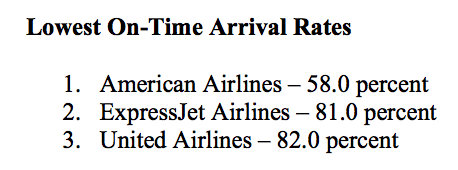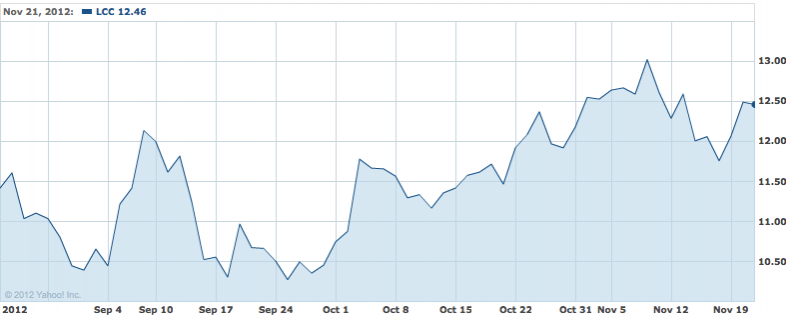Labour strife mounts for both US Airways and American as creditors weigh potential merger
Intrigue around the potential American-US Airways merger has been resurrected during the last couple of weeks as current management from each carrier has reportedly met with American's creditors' committee to persuade its members to lean towards their preferred outcome - in the case of US Airways a merger, and with American, possibly an emergence from Chapter 11 as a stand-alone entity. But as creditors weigh the merits of the business plans laid out to them, each airline continues to face challenges in their current labour relations that stand to snowball if the creditors ultimately bless a combination of the fourth and fifth largest US carriers based on domestic share.
US Airways was forced to tone down its public push for a merger with American beginning in Aug-2012 when the two companies signed a non-disclosure agreement that allowed the airlines to trade more in-depth information in their due diligence to determine if a merger was the best course to take going forward. American's initial strong opposition to the tie-up has waned significantly over the course of the last few months, but publicly management is still pushing to emerge from its year-long bankruptcy reorganisation as a stand-alone entity.
American struggles to get unenthusiastic support for concessionary deals
Since the onset of the quiet period ushered in by the non-disclosure agreement American has worked to reach concessionary deals with all of its labour groups without resorting to court-imposed contracts on an already highly disgruntled workforce.
Unions representing American's flight attendants and mechanics essentially accepted the deals resentfully, determining they were more favourable than labour contracts imposed by the bankruptcy court.
American's pilots in Aug-2012 rejected an offer from management, which led to the airline's management gaining court permission to impose deal on the pilots, represented by the Allied Pilots Association. American's authorisation to force its terms on the pilots led to a raft of schedule disruptions in late Sep-2012 that resulted in numerous delays and flight disruptions.
See related article: Credibility of American Airlines management diminishes as labour and operational strife mushrooms
The fallout from the labour issues was reflected in the on-time arrival and cancelled flight data compiled by the US Department of Transportation for Sep-2012 that showed American had the highest number of cancelled flights and the lowest on-time arrival rate among US carriers.
US carriers with the highest rates of cancelled flights: Sep-2012

US carriers with the lowest on-time arrivals: Sep-2012

Eventually, American and the APA resumed contract negotiations, and the pilots are currently holding a vote to endorse a new tentative agreement. The latest pact is compounded by internal strife at the APA after a leadership shake-up earlier in 2012. On Nov-2012 the APA's current head addressed some pilots who stated they would rather see American liquidate than endorse the tentative agreement. "While martyrdom in the manner of Eastern Airlines is one option, I do not believe that the majority of our pilots would prefer to embark upon a path of self destruction in order to make a political point or poke management in the eye," said APA president Keith Wilson.
If American's management succeeds in gaining APA's approval for the deal, it still faces an overall high level of general disgust among the airline's major workgroups, which have all publicly endorsed a merger with US Airways and worked out their own contract terms with the US Airways' management, led by CEO Doug Parker. Those unions prefer US Airways executives to manage the combined carrier.
US Airways pilots and flight attendants continue to operate under separate contracts
While US Airways' management concluded it was necessary to attain buy-in from American's unions prior to a merger, its courting of American unions has triggered some strife within the pilot and flight attendant work forces at US Airways. The angst stems from those groups continuing to operate under separate contracts seven years after merger between US Airways and America West officially closed.
Twice this year flight attendants from the two groups within the merged US Airways, both represented by the Association of Flight Attendants-CWA, have rejected a tentative agreement. Now the union has authorised a strike vote as it presses for additional mediation sessions with a federal mediator to reach a new deal.
The fractious relationship between the two segments of US Airways pilots reached a zenith in 2008 when a faction of "East" pilots from the former US Airways broke ranks with the Air Line Pilots Association after they deemed a seniority list drawn up by a federal mediator unfairly favoured the America West pilots. The East pilots formed the US Airline Pilots Association (USAPA), and the two pilot groups became embroiled in a court battle to resolve seniority, which has hindered US Airways management from reaching a joint contract with the two groups.
As the animosity over seniority between the US Airways pilot groups continues, Forbes has reported that USAPA has filed a motion in American's bankruptcy proceedings to gain access to testimony and other information presented during Chapter 11 proceedings. The publication stated that US Airways management and USAPA earlier in 2012 negotiated a preliminary MOU that addresses wage and working conditions if a merger occurs, but with the onset of the non-disclosure agreement USAPA has essentially been shut out of discussions.
Challenges will only intensify in merging work groups of American and US Airways
US Airways management has repeatedly been bombarded with questions about how it would navigate seniority integration between its pilots and those at American given the challenges and lack of seniority resolution between the East and former America West pilots.
During a May-2012 investor conference US Airways president Scott Kirby noted the proposed merger was a way for the current US Airways pilots to "start over". He explained the goal would be for the US Airways-American pilots to have a joint contract at the closing of the merger, and referenced US federal legislation - officially dubbed the McCaskill-Bond Amendment - that would mandate binding arbitration to resolve seniority due to a contract being in place. In somewhat of a chicken and egg scenario, in the case of US Airways and America West, the seniority issue went to binding arbitration before a joint contract was concluded, which resulted in the court disputes and stalemate in reaching a seniority agreement.
Despite Mr Kirby's confidence in a merged US Airways-American swiftly achieving an agreement for seniority integration, the reality is it will be a charged issue between the two pilot groups that could mirror the chaos that has ensued at US Airways. While the legislation requires merged carriers to resolve seniority disputes between labour groups through negotiation or arbitration, the reality is pilot unions are not timid in pooling their resources to mount drawn-out legal battles to challenge decisions rendered in seniority integration, and assuming that things will be different between two groups as fiery as the pilots at US Airways and American is short-sighted. It would be wise for US Airways management to study how Delta Air Lines brokered a seniority accord between the Delta-Northwest pilots before the carriers agreed to move forward with a merger.
It is also unwise to assume a smooth seniority integration between flight attendants of US Airways and American. The McCaskill-Bond legislation finalised in 2007 was a result of TWA flight attendants essentially being stapled to the bottom of the American FA list when the two carriers merged in 2001, and was designed to prevent a similar situation from occurring in the future.
Investors turn a blind eye to seniority issues
The financial community has largely ignored the significant integration challenges US Airways' management will face if it succeeds in merging with American, and the current strife US Airways is experiencing with its current pilot and flight attendant groups. Institutional investors have largely endorsed the tie-up and the 21-Nov-2012 closing share price of USD12.47 for US Airways shares is well above 52-week low of USD3.96. During the last three months the carrier's share price has traded closer to the 52-week high of USD14.51 (based on Yahoo Finance), which reflects little concern over labour playing a major role in the execution of a potential merger.
US Airways share price: 04-Sep-2012 to 19-Nov-2012

Another element that remains unclear is if the deal US Airways reached with American's pilots and the MOU it forged with USAPA would result in pilots at the combined carrier achieving standard pay rates, which were recently reset with the approval by a new deal by Delta's pilots during 2012. The tentative agreement American's pilots are currently voting to endorse or reject appears to award pay rates similar to Delta three years after the six-year contract would take effect. Delta has cited some cost pressure in the short-term from the pilot deal, but assures elements of the pact, including more flexibility to operate larger regional jets, will produce favourable returns for the carrier over the long term.
See related article: Delta's strong earnings performance remains clouded by unit cost pressures
As the creditors' committee and Wall Street contemplate the cost implications of the pilot deals reached between American and its pilots in a stand-alone scenario and the rates under the agreement American's pilots have reached with US Airways, the group needs to consider if US Airways' estimate of USD1.2 billion in annual merger synergies still stands.
The creditors committee has much to consider as it weighs the voluminous data presented by US Airways and American to support each carrier's desired outcome in American's Chapter 11 bankruptcy reorganisation. With representatives of American's labour unions serving as members of the committee, it seems that US Airways would have an advantage in forging ahead with a merger. But even if the carrier prevails, the promised financial gains from the merger are questionable as total labour buy-in remains firmly grounded in reaching what all work groups deems a favourable seniority integration, something US Airways continues to struggle with seven years after its merger with America West.